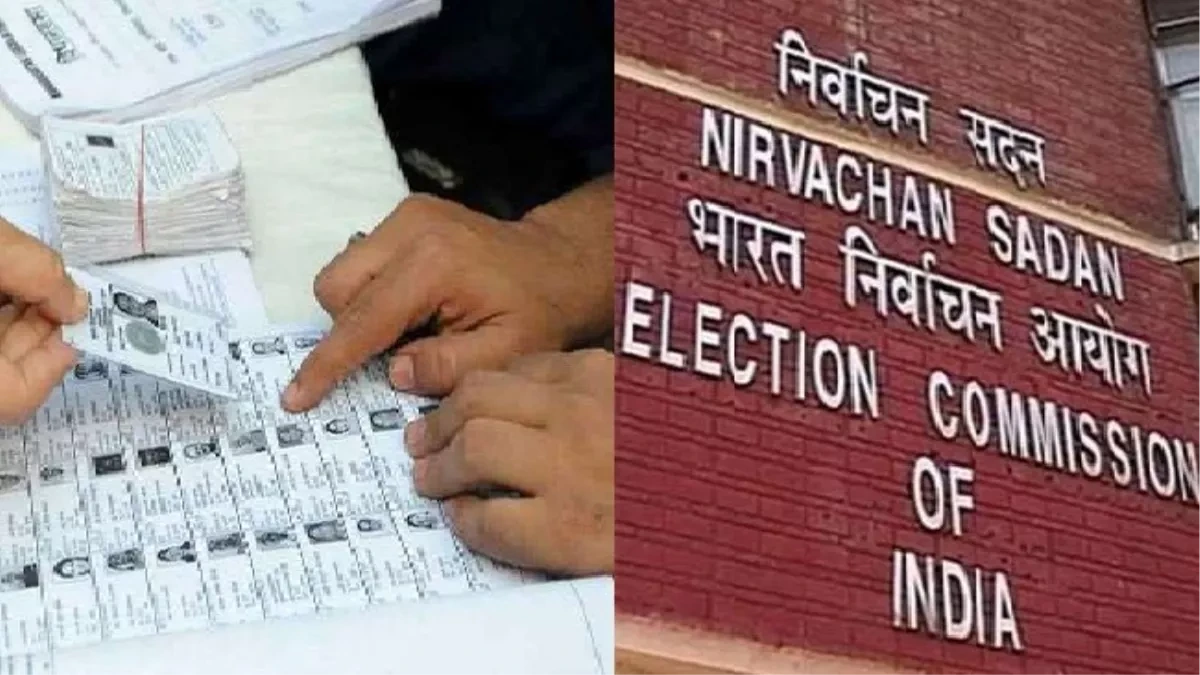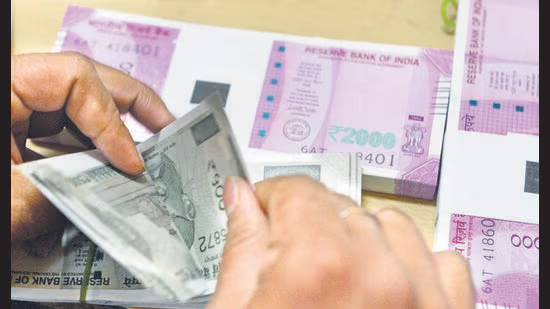- Courses
- GS Full Course 1 Year
- GS Full Course 2 Year
- GS Full Course 3 Year
- GS Full Course Till Selection
- Answer Alpha: Mains 2025 Mentorship
- MEP (Mains Enrichment Programme) Data, Facts
- Essay Target – 150+ Marks
- Online Program
- GS Recorded Course
- Polity
- Geography
- Economy
- Ancient, Medieval and Art & Culture AMAC
- Modern India, Post Independence & World History
- Environment
- Governance
- Science & Technology
- International Relations and Internal Security
- Disaster Management
- Ethics
- NCERT Current Affairs
- Indian Society and Social Issue
- NCERT- Science and Technology
- NCERT - Geography
- NCERT - Ancient History
- NCERT- World History
- NCERT Modern History
- CSAT
- 5 LAYERED ARJUNA Mentorship
- Public Administration Optional
- ABOUT US
- OUR TOPPERS
- TEST SERIES
- FREE STUDY MATERIAL
- VIDEOS
- CONTACT US
Government to Establish Deregulation Commission to Minimize State Intervention
Government to Establish Deregulation Commission to Minimize State Intervention

Introduction
On February 16, 2025, Prime Minister Narendra Modi announced the formation of a Deregulation Commission to reduce state intervention in governance and promote the ease of doing business. The commission aims to eliminate outdated regulations, simplify compliance, and attract private investment.
India’s Journey of Deregulation and Economic Reforms
- 1991 Economic Reforms: The first major deregulation push occurred in 1991 under Prime Minister P.V. Narasimha Rao and Finance Minister Dr. Manmohan Singh, when India shifted towards a market-oriented approach by dismantling the License Raj.
- 2014-2024 Reforms: Since 2014, the government has further liberalized several key sectors, focusing on reducing state intervention and enhancing private participation.
Government Efforts in Regulatory Reform
1. Jan Vishwas Bill 2.0: Reducing Compliance Burdens
- The Jan Vishwas 2.0 Bill is an extension of Jan Vishwas 1.0, aimed at eliminating archaic compliances and simplifying business regulations.
- This initiative has resulted in the removal of hundreds of outdated rules and the decriminalization of minor regulatory offenses, ensuring a smoother business environment.
2. Liberalization of Key Sectors
The government has strategically reduced its control in several major sectors to attract private investments:
|
Sector |
Key Reforms |
|
Nuclear Energy |
Proposed amendments to the Atomic Energy Act (1962) to allow private sector participation. NTPC plans to invest $62 billion to develop 30 GW of nuclear capacity by 2047. |
|
Space Sector |
The creation of IN-SPACe has opened satellite launches and manufacturing to private firms. A ₹5 billion Technology Adoption Fund now supports space startups. |
|
Mining |
Coal sector reforms allow private companies to bid for mining contracts. India’s coal production increased by 8.5% in FY 2023-24. |
|
Power Distribution |
Several states are privatizing DISCOMs to reduce losses and improve service efficiency. |
|
Insurance |
FDI limit raised from 74% to 100%, attracting global insurers. |
|
Defense |
FDI increased from 49% to 74% under the automatic route, leading to increased domestic production of defense equipment. |
|
Telecom |
100% FDI now permitted (up from 74%), facilitating foreign investments and technology transfers. |
3. Svamitva Yojana: Strengthening Property Rights in Rural India
- The Svamitva Yojana, launched in April 2020, focuses on providing legal documentation of property rights in rural areas.
- Achievements so far:
- 3 lakh villages surveyed using drone and GIS technology.
- 2.25 crore property cards issued to rural landowners.
- ₹100 lakh crore worth of property unlocked, enabling villagers to access bank loans.
- The scheme is reducing property disputes, formalizing land ownership, and allowing rural populations to leverage their assets for economic benefits.
4. Banking and Financial Sector Reforms
The banking sector, previously struggling with high Non-Performing Assets (NPAs) and public sector bank inefficiencies, has undergone a major transformation:
- Financial Inclusion and Credit Expansion
- Mudra Yojana: Provided ₹32 lakh crore in loans to small businesses and self-employed individuals.
- Banking Expansion: Nearly every village now has a bank branch or banking correspondent within 5 kilometers.
- Banking Sector Revival
- Public sector banks, which were previously in crisis, have now recorded a profit of ₹1.25 lakh crore in just 9 months of the current financial year.
5. Taxation Reforms: Supporting the Middle Class
- Income tax exemption threshold increased from ₹7 lakh to ₹12 lakh, benefiting the Neo-middle class.
- Corporate tax reductions have encouraged greater investment from domestic and international firms. (In the 2024 Union Budget, India reduced the corporate tax rate for foreign companies from 40% to 35%, effective FY 2024-25.)
Why Further Deregulation is Necessary?
India's rapid economic growth and aspirations to become the third-largest economy require a business-friendly environment. Excessive regulations increase costs, discourage investment, and slow down economic activity. By reducing government control in key sectors, deregulation aims:
1. Boosting Economic Growth and Competitiveness
- Excessive regulations increase the cost of doing business and hinder economic expansion. (India -Pre-1991, License Raj) )
- Countries with simpler regulatory frameworks attract more Foreign Direct Investment (FDI) and encourage domestic entrepreneurship. (E.g. Singapore)
2. Reducing Bureaucratic Red Tape
- Many industries face delays due to excessive paperwork and outdated laws. (Real Estate & Infrastructure, Manufacturing & MSMEs )
- Deregulation will expedite decision-making processes and allow faster project approvals. (Single Window Clearance System for Coal Mines ,National Single Window System (NSWS))
3. Encouraging Innovation and Entrepreneurship
- Startups and SMEs struggle with compliance-heavy regulations.
- Easing business laws will create an innovation-friendly environment, allowing companies to focus on growth rather than bureaucratic hurdles. (E.g.-electronics manufacturing industry -India: second-largest mobile phone producer globally and among top five countries in electronics manufacturing output. )
Key Factors to Consider While Forming the Deregulation Commission
1. Inclusive Consultation with Stakeholders
- Industry Leaders & Trade Associations: Engaging businesses and trade bodies to ensure regulatory changes align with market realities.
- Public Representatives & Consumer Advocacy Groups: Involving civil society to ensure deregulation benefits consumers and maintains public interest.
2. Balancing Deregulation with Public Interest
- In critical sectors like healthcare, education, and public utilities, deregulation must not compromise service quality or increase prices disproportionately. (E.g. Rising insulin prices have significantly impacted diabetic patients, )
3. Strengthening Regulatory Oversight
- Empowering Regulatory Bodies: Institutions like the Competition Commission of India (CCI), Securities and Exchange Board of India (SEBI), and Reserve Bank of India (RBI) must have adequate authority and resources to oversee deregulated sectors.
- Ensuring Fair Competition and Preventing Monopolies: Regulatory mechanisms must be strenthened to prevent anti-competitive practices, monopolization, and consumer exploitation.
4. Strengthening Digital Governance & Transparency
- Data-Driven Policymaking: Leveraging Artificial Intelligence (AI) and Big Data analytics to monitor and assess the impact of deregulation in real-time.
- E-Governance & Compliance Monitoring: Implementing digital platforms to ensure transparency, automate compliance, and reduce corruption. (E.g. GeM Portal)
5. Ensuring Accountability & Public Grievance Redressal
- Independent Oversight Committees: Establishing mechanisms for continuous evaluation of deregulation measures.
- Public Reporting & Transparency: Periodic publication of policy outcomes, impact assessments, and success metrics to ensure public trust.
Conclusion
- The establishment of the Deregulation Commission marks a significant milestone in India’s economic reform journey. By removing excessive bureaucratic controls, encouraging private enterprise, and promoting ease of doing business, the government aims to unlock India’s full economic potential.
- However, responsible deregulation must ensure that fair competition, public welfare, and economic stability remain key priorities. If executed properly, this initiative could propel India towards its goal of becoming a $5 trillion economy and a global leader in economic innovation.
|
Also Read |
|
| FREE NIOS Books | |




